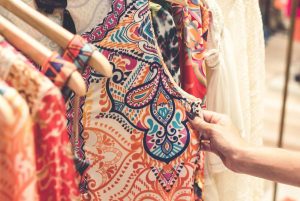On hearing “mystery shopping”, a person might conjure up an image of a heavily loaded shopping cart pushed an isle-stalker with oversized black sunglasses. The reality of this highly versatile CX tool is much more interesting. The CX approach to mystery shopping takes us on adventurous customer journeys that might not see the inside of a traditional store at all – just think of the way business has transcended into the digital space. CX also propagates a holistic view of mystery shopping, aiming to probe all business channels to explore every step of the customer journey.
Every industry also brings their own unique considerations, and the mystery CX shopping team needs to thoughtfully design their research around it. Join me on a reflective trip through 6 mystery CX shopping projects from diverse industries and our main take-outs:
Make diamonds your best friend (a high-end jewellery retailer)
 Here we were reminded of how crucial the choice of mystery shopper is for every project: mystery researchers have to relate personally to the product or brand’s customer profile. They are required to recreate a convincing shopping scenario in these stores. Beforehand then, the mystery researchers must immerse themselves in the world of the customer through empathy mapping.
Here we were reminded of how crucial the choice of mystery shopper is for every project: mystery researchers have to relate personally to the product or brand’s customer profile. They are required to recreate a convincing shopping scenario in these stores. Beforehand then, the mystery researchers must immerse themselves in the world of the customer through empathy mapping.
This equips them to fully understand the needs and pain points of a typical customer, and they can authentically present and approach the customer problem: asking the right questions, acting in a way that will authentically showcase the staff’s response, and handling a problem or create a satisfactory end-to-end journey. If they clearly seem out of place in the interaction, it will confuse the staff and lead to an unrealistic mystery CX shopping test.
Don’t touch the merchandize? Think again… (a clothing store)
 Even the best designed CX mystery shopping assignment can surprise with gems of unexpected insights, especially when it is augmented with immersions with actual customers (CX immersions). Here we realised how much customers relied on their sensory experience to make decisions about the items they selected. This was especially true of their tactile experience, with them often touching the garments to assess the quality of the fabrics.
Even the best designed CX mystery shopping assignment can surprise with gems of unexpected insights, especially when it is augmented with immersions with actual customers (CX immersions). Here we realised how much customers relied on their sensory experience to make decisions about the items they selected. This was especially true of their tactile experience, with them often touching the garments to assess the quality of the fabrics.
How often do you smell fresh produce to determine its freshness?
Not gone in 60 seconds (a car dealership)
 The car-buying process is more complex than your average mystery CX shopping experience. This means it’s important to be very clear about every touch point to be evaluated. If researchers are required to assess the journey up to a test-drive level, they must be equipped with the right amount of information and training to recreate a convincing experience with the staff throughout.
The car-buying process is more complex than your average mystery CX shopping experience. This means it’s important to be very clear about every touch point to be evaluated. If researchers are required to assess the journey up to a test-drive level, they must be equipped with the right amount of information and training to recreate a convincing experience with the staff throughout.
We also had to consider the authentic presentation of the CX researcher. For example, if they arrived in a high-volume lower-end vehicle at a luxury car brand, it may discredit the believability of the prospective customer. (Interestingly though, we learned from luxury car brand customers that they often “dress down” purposefully when they shop around for their next car purchase.)
Rising to the occasion (a coffee shop)
 When designing mystery CX shopping journeys, be open to be proven wrong – this is where the real insights hide. This client was a coffee shop located in corporate businesses’ premises. Our initial theory was that nobody would want to stand in a queue, but we learnt that, together with the brand connection, the customers’ loyalty was driven by the opportunity to connect with colleagues. It turns out, they did not mind standing in a queue at all! We then redesigned for more enjoyable queue experiences, e.g. optimising the flow.
When designing mystery CX shopping journeys, be open to be proven wrong – this is where the real insights hide. This client was a coffee shop located in corporate businesses’ premises. Our initial theory was that nobody would want to stand in a queue, but we learnt that, together with the brand connection, the customers’ loyalty was driven by the opportunity to connect with colleagues. It turns out, they did not mind standing in a queue at all! We then redesigned for more enjoyable queue experiences, e.g. optimising the flow.
Putting experience differentiator claims to the test – knowing all the customers’ names and preferences, despite producing thousands of cups of coffee a day! As mystery CX researchers we experienced a brand’s experience DNA in action and wow! Even for us as seasoned CCX professionals, this was astounding.
Paint a thousand words (a DIY store; paint)
 Once again, we were reminded of how important it is to provide mystery shoppers the context of the problem, i.e. providing sufficient visual material (pictures of the rooms to be painted). This enables all the CX shoppers to present a similar story with a visual framework, to share the pain points and challenges.
Once again, we were reminded of how important it is to provide mystery shoppers the context of the problem, i.e. providing sufficient visual material (pictures of the rooms to be painted). This enables all the CX shoppers to present a similar story with a visual framework, to share the pain points and challenges.
We also learned that for CX mystery shopping, less is more. A big group of researchers does bring diversity but with that, inconsistency. The QA of qualitative CX mystery shopping places more pressure on the analysts. It makes more sense to select research teams that are similar to the shopping persona.
Think desk (an office furniture store)
 We appreciated again the value that each CX researcher, with her own skills and experience base, brings to the table. The diversity enriched our insights and the very proficient channel assessments strengthened it further.
We appreciated again the value that each CX researcher, with her own skills and experience base, brings to the table. The diversity enriched our insights and the very proficient channel assessments strengthened it further.
Read More: Customer Experience and Mystery Shopping
Partner with The Consumer Psychology Lab, a customer experience consultancy, in your quest to become more customer-centric and to design experiences that customers will love. We are passionate about customer experience, highly skilled in CX qualitative reviews and provide authentic insights from walking in your customers’ shoes.






